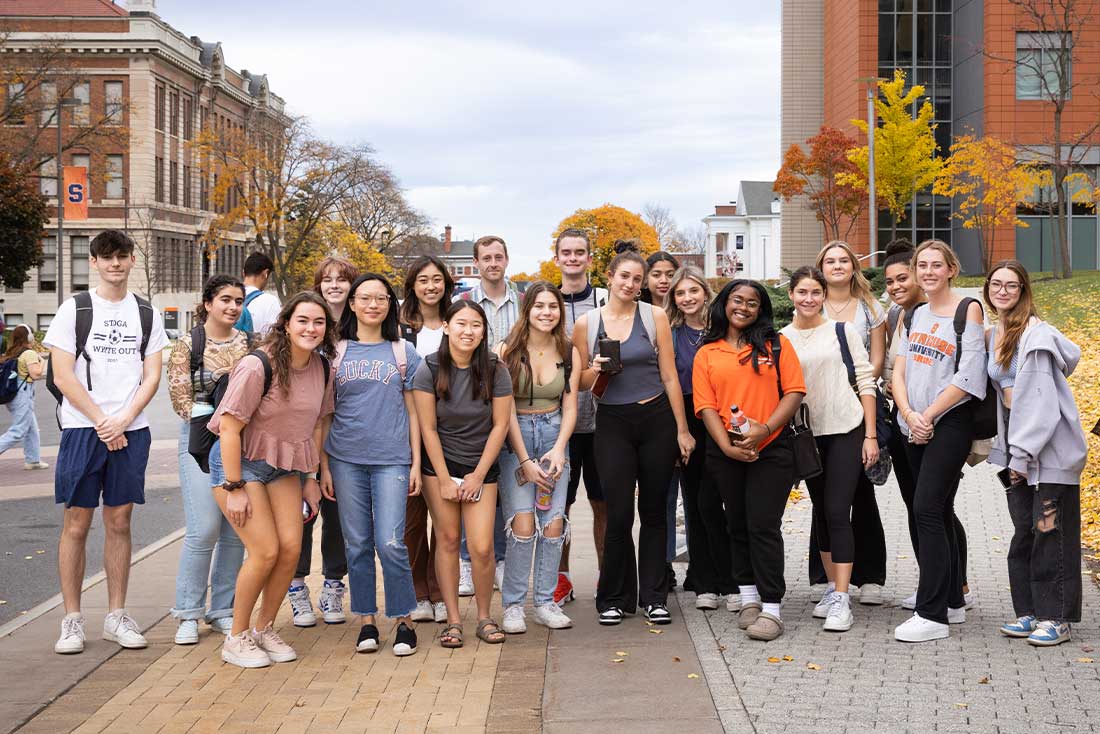
As James Baldwin so eloquently wrote, it is impossible to understand our present without acknowledging our past. And for 18 undergraduate students from the School of Social Work in Falk College, discovering the past and how it connects to the present was the purpose of their “Roots of Social Work” Onondaga Historical Association tour of the City of Syracuse in late October.
“We developed this opportunity to provide students historical context and help them make connections to contemporary social work practice in the City of Syracuse,” says Nadaya Brantley, Undergraduate Director and assistant teaching professor in the School of Social Work. “We want our students to develop consciousness and respect for the historical roots of social injustices experienced by those in our community.”
On the tour, the students learned from Robert Searing, Curator of History at the Onondaga Historical Association, about the thousands of primarily Black residents who at first were forced to live in the city’s 15th Ward, and then forced to leave their close-knit community filled with Black-owned houses and businesses to make way for the construction of Interstate 81.
“It became apparent to me that in order to understand the social, economic, and political issues that the city faces today, I would have to understand the history of Syracuse,” Social Work student Chyler Rosenberg wrote in an essay. “Learning about the destruction of the ward and the terrible effects it had on the community made me feel frustrated, but also eager to engage in a community that has been shaped by its unfair past and a very serious racial and economic divide.”
The students also learned of Syracuse’s deep connection to abolitionism, including Secretary of State Daniel Webster’s “Syracuse Speech” in 1850 warning the city to adhere to the Fugitive Slave Act; the minister at Wesleyan Methodist Church who assisted fugitive slaves; and the Jerry Rescue statue in Clinton Square that celebrates the 1851 rescue of William “Jerry” Henry, who was arrested for defying the Fugitive Slave Act but saved by a group of residents who freed him from the police station.
“I learned much more about the depth of history of Syracuse and its active, central, and open role in the abolitionist movement,” Social Work student Lily Kuzminski wrote. “Syracuse was an exceptional area for previously enslaved people or ‘freedom seekers’ to come for solace from slave states–a stop on the Underground Railroad used to move runaways to other areas of either upstate New York or Canada.”
Following the tour, Brantley asked the students to write a reflection essay that expressed their feelings about what they learned. Brantley says the assignment was designed for the students to think critically about the how a city’s history impacts current social work practices with its residents.
Here are excerpts from the essays from five students who were on the tour:
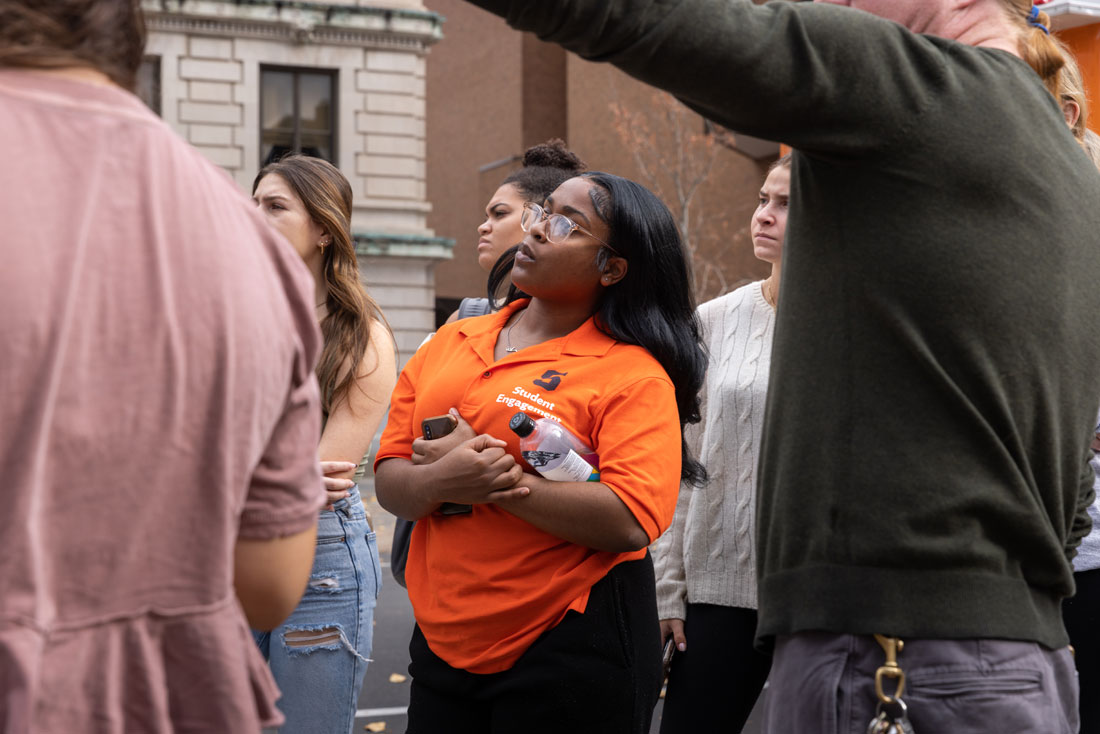
Amaya Saintal ’26
Syracuse fell victim to a displacement epidemic in 1938. The 15th Ward was a beautiful ethnic, cosmopolitan, polyglot community. It was home to many Jewish and Black businesses. Both ethnic groups were victims of prejudice and came together to create a safe space. In 1938, this ward was destroyed to create Pioneer Homes–one of the first of five public housing projects in the United States. Many families were left to figure out what to do next, and redlining was openly being used in Syracuse. Black families were stuck and eventually lived in impoverished conditions.
This information is relevant to me because when displacement occurs, the person’s well-being and basic human rights are denied. It creates high vulnerability and often increases discrimination and poverty. But also, it still influences the present day and is actively affecting communities in Syracuse.
Throughout the entire tour, I kept thinking about my home–Newark (New Jersey). The similarities in the economy, redlining, and poverty rates between both cities are daunting. The systemic issues are rooted deeply in both cities, and I felt moved to do something about it. Social workers are the trailblazers in helping people improve their well-being and create paths for contentment. Overall, the job is not easy but after touring Syracuse and its history, you see why the difficulty is worth it.
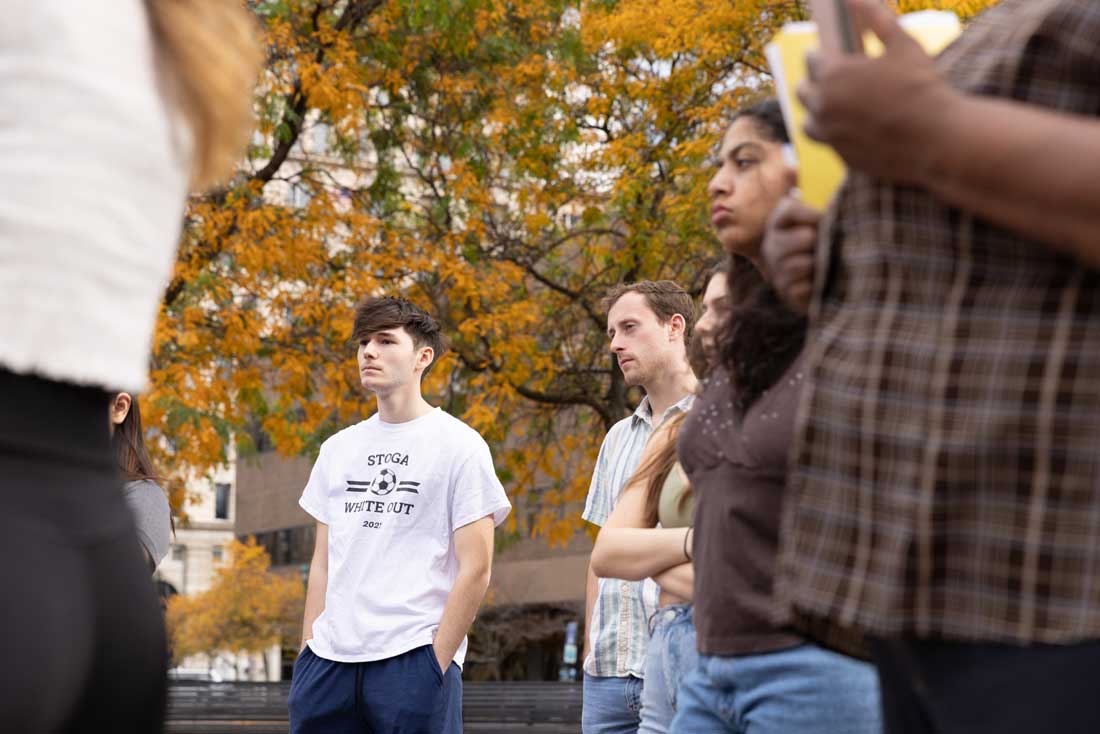
Carson Wright ’26
After hearing the statistic that 33 percent of kids in Syracuse are not ready for kindergarten, my eyes were opened. I wanted to learn more about the city because I was able to see how poverty stricken the downtown area is. I never knew that so many different families had the same path as the people who lived before them. In Syracuse, kids have a hard time going to school because of multiple factors that contribute to their impaired learning, whether these factors are lead poisoning, violence, or just parents not knowing how to prepare their kids for the early stages of school.
On the tour I learned about the Dunbar Center, which has been around for over 100 years trying to get people the help they need.
I believe that you truly must be in Syracuse to learn about how things were, because I honestly had no clue what it was like for people living in poverty until I learned about it in social work class and toured the city. The Jerry Rescue was cool to me because I didn’t even know that happened, and it was amazing because we were standing right where it happened, across the street from the jail where he was held.
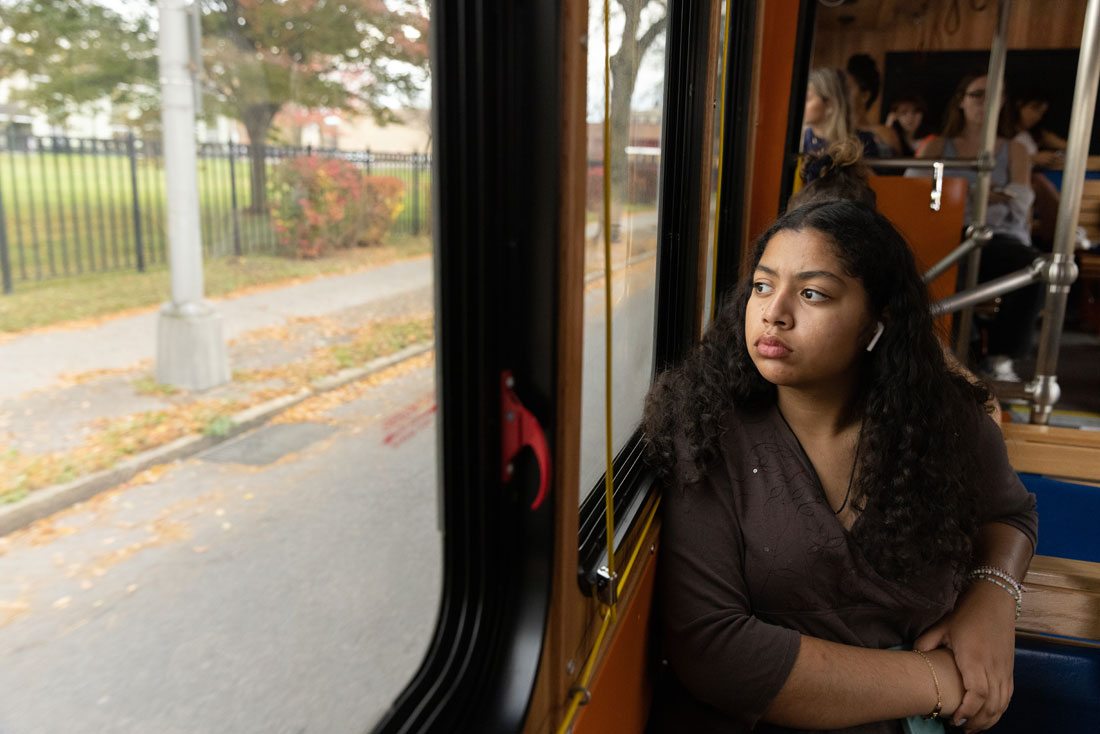
Layla Soberany ’26
Pioneer Homes is one of the oldest housing projects in the country, and they are still used for many low-income residents.
I feel this is where social work skills and workers can come in to help solve these problems. If there are people living in actively unfit conditions and people need help, as a social worker I would find more suitable living areas and be there to provide for the ones seeking help. I can find out how to improve their homes as a group and community.
One example I feel that a social worker will come into play in Syracuse would be the jail at the center of the city. This can not only be an opportunity to provide for those inside the jail, but also the community who have been to jail and are out. We can help those coming out of jail new to the current lifestyle, or those who may have families suffering with a loved one inside. Either way, I feel like there is always room for social work to be able to thrive in Syracuse. With the extreme rates of poverty and endless violence that runs in the city, there is always a time and space for the aid of a social worker. The current community needs the support from others on macro and micro levels throughout the entire city.

Chyler Rosenberg ’26
Before attending the University, I lacked any knowledge on the complex history of Syracuse or the lives of its residents. For example, the city was a pivotal place during the Civil War and many influential abolitionists spoke and fought to free slaves. Syracuse hosted feminist leaders and women’s rights conventions, it was home to settlement houses, and had an impressive salt market in its prime. Syracuse is much more than what meets the eye, and I am very appreciative that I had the opportunity to hear about its history–the good and the bad.
The issues facing Syracuse and its residents are ongoing, and social workers are at the heart of finding the solutions. In the South Side of Syracuse, the schools are worse, poverty is extremely concentrated, and there is a lot of violence. The fact that the more recent generations are facing the consequences of the past is disappointing.
One improvement the city plans on enacting to address some of these obstacles is remodeling Highway 81. This highway divides Syracuse into four sections and largely contributes to the segregation of the city. We can only hope that by redoing this highway the lives of residents improve, but it will take a long time to reconstruct both the highway itself and address the repercussions it has caused.
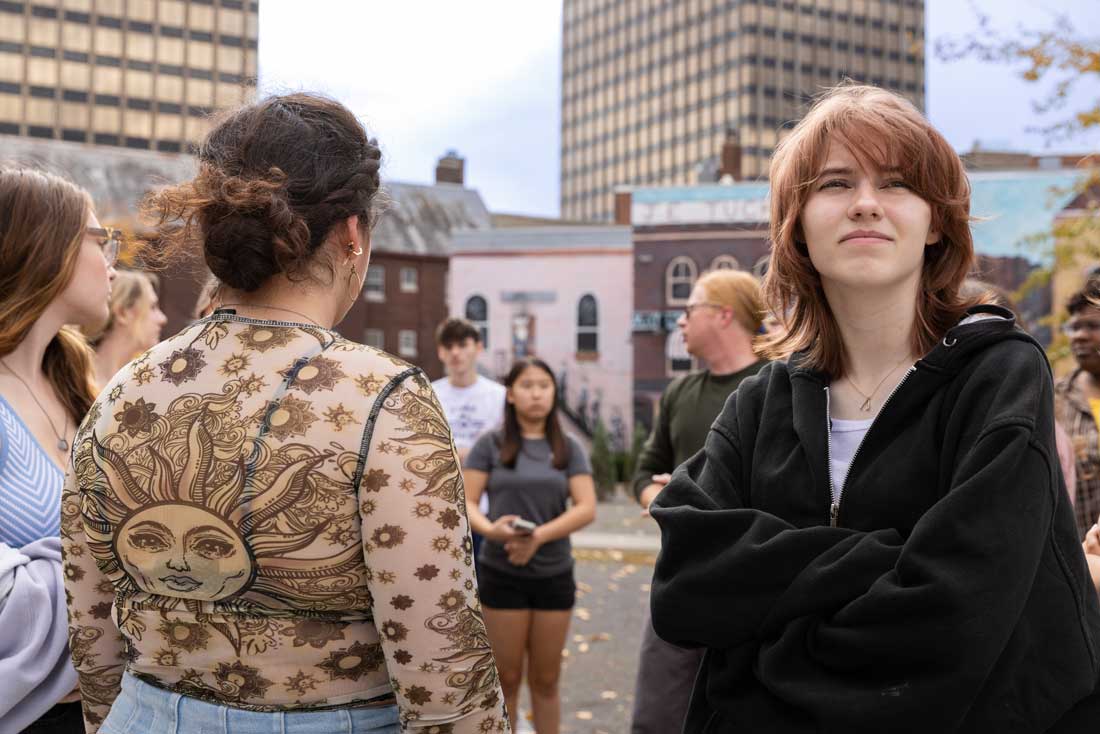
Lily Kuzminski ’26
Syracuse is regarded as one of the poorest and racially segregated places in the United States. Over time, the city has been divided into sections, the southern/western parts of the city are established as the most impoverished, and the most in need. The southern side of the city is where around 90% of the African American population lives.
With new consideration and plans to take down I-81 and replace it with a street-level grid, there is hope for the hard-hit community that surrounds it. By taking a hard look at the harms done to people in the past, there is a real chance for the I-81 project to improve housing conditions, health outcomes, and economic and educational opportunity for all people in Syracuse.
As a social worker, it is incredibly beneficial to understand the realities of the people who inhabit this city, and what structural systems are in place that keep it so heavily segregated and impoverished. It makes me want to spring into action and wish that my individual influence will suffice to make this city a city of progress, and less one based on negligence and racial discrimination. Syracuse’s poverty is derivative of the federal policies made at the expense of people of color, so it is essential to combat these systems through the resources we have at our disposal here at Syracuse.
– Matt Michael
